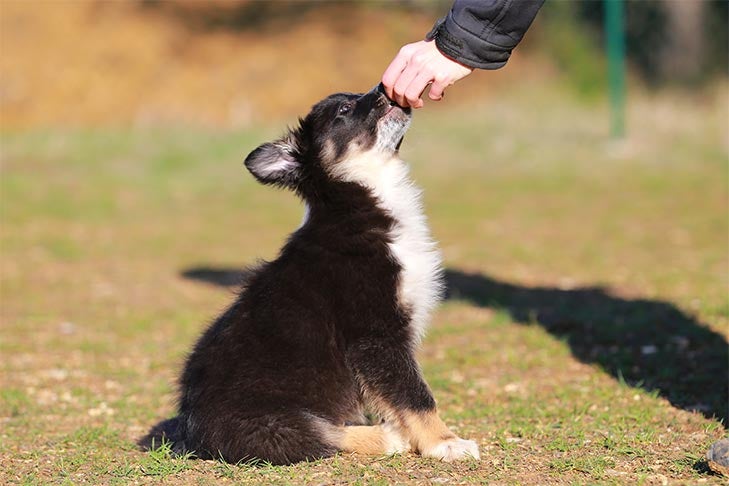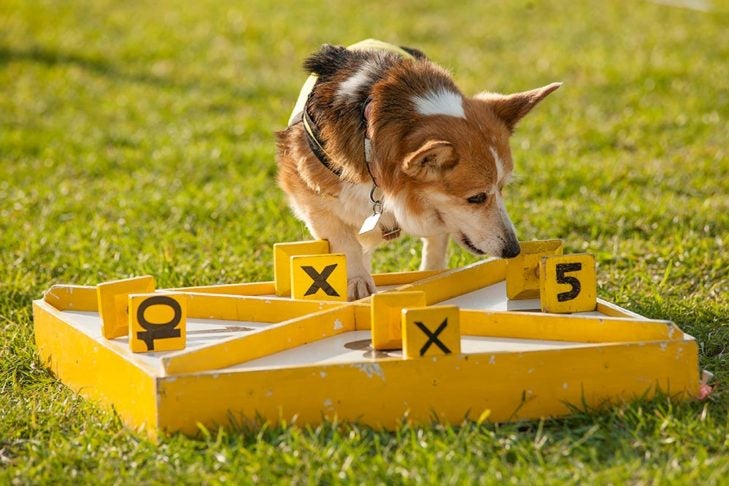AKC GoodDog Helpline (GDH) is our telephone and video dog training consultation service. We offer live, personalized assistance with your questions about training your puppy or dog. To celebrate GDH’s 10th anniversary in 2023, we’ve rounded up the most common questions that our dog trainers hear from owners just like you. A common question is, “What can your puppy safely chew?”
One of the most important first steps for any new puppy owner is to teach appropriate chewing habits. Chewing comes naturally to puppies. After all, they explore the world with their mouths, and chewing helps to relieve teething pain. But you don’t want your home and property destroyed. Plus, you need to consider your puppy’s safety. Teaching your puppy what they can and cannot chew can be a challenge, but there are ways to make it easier for both of you!
These 10 tips will help you teach your puppy appropriate chewing behavior, so you can both spend more time learning the fun stuff.
1. Provide Plenty of Safe Toys and Inedible Chew Bones
Puppies need to chew, so it’s important to give them lots of appropriate options designed specifically for puppies, such as teething toys or plastic chew bones. If you don’t make chew toys available to your pup, they will make their own out of whatever they can sink their teeth into. Look for safe puppy toys that suit your dog’s personality. A power chewer might tear chunks off a softer rubber toy, whereas a gentle dog might prefer a squishier texture.

2. Try Frozen Options to Alleviate Teething Pain
Before they’re six months old, puppies lose all their baby teeth as their adult teeth grow in. And just as it does for humans, it hurts dogs too!
Providing cold chews can help ease the pain in your pup’s tender gums. Ice cubes or frozen wet washcloths are cheap and easy options. Or you can try chew toys that are designed to be frozen. Even a food-stuffable puppy toy can be filled with mushy kibble or broth and frozen for a cold, soothing treat.
3. Ask Your Vet What’s Safe for Your Puppy to Chew
There are a lot of topics to cover at your puppy’s first vet visit, but don’t forget to ask about safe chewing options. It’s important to match chew toys to your pet’s chewing strength, and your vet can tell you what to expect from your puppy’s breed. You can also ask about the suitability of edible chews. For example, a chew toy designed for puppies might be okay for a less-aggressive chewer without adult teeth, but bully sticks would be better for a strong chewer.
4. Keep Valuables and Dangerous Items Away
Don’t expect your puppy to know the difference between a chew toy and your sneaker. If your pup can fit something in their mouth, they will consider it fair game.
In fact, your sneaker might be more appealing because it smells like you. Keep valuables out of reach and puppy-proof your home so your dog can’t chew anything dangerous like electrical wires.

5. Supervise Your Puppy During All Waking Hours
Even though you’ve puppy-proofed your home, you can’t leave your new pet unsupervised. There are simply too many temptations. The couch cushion, the leg of the dining room table, or the baseboard could all become your pup’s latest chew toy. If you have your eyes on your dog, you can prevent them from making poor choices and redirect them to an appropriate chew as soon as possible.
6. Prevent Chewing by Crating or Isolating Appropriately
It’s impossible to watch your puppy every second of the day. So when you need to step away briefly, make sure your puppy is safe in a crate or dog-secure area. Provide several chew toys to keep your dog occupied while they’re in that spot.

Consider using food-stuffed chew toys so your puppy is rewarded while they chew. That’s a great way to get your puppy hooked on chewing appropriate items.
7. Teach a “Leave It” Cue
How do you stop your puppy from chewing inappropriate items? With the “leave it” cue. “Leave it” tells your puppy they can’t have that item, and it can be a lifesaver.
It can prevent your dog from snatching your slipper or from eating dropped medication. Start by teaching your puppy to take things from your hand only when you give permission, then slowly increase the difficulty until you’re simulating real-world situations.
8. Teach a “Drop It” or “Out” Cue
If your puppy is already chewing something they shouldn’t, be prepared with the “drop it” cue. “Drop it” or “out” tells your dog to drop whatever is in their mouth. Teach it by trading your puppy for something better like a treat or beloved toy.
Unless it’s a safety issue, never chase your puppy to get the object. Otherwise, you will establish a new and unwelcome habit of playing keep-away.
9. Give Your Dog Plenty of Physical and Mental Exercise
Bored dogs make their own fun. And that includes chewing things they shouldn’t. If you provide your puppy with appropriate levels of physical exercise and mental stimulation, they will be less likely to get into trouble.

Training sessions, walks, playtime, and puzzle toys can all help meet your dog’s needs and prevent problem behaviors. This is especially true before you place your puppy in their crate or safe area. If they’re physically and mentally tired, they will settle down faster and easier.
10. Don’t Punish After the Fact
Dogs live in the moment, so something that happened even a minute ago is probably no longer top of mind. Plus, although they can learn lots of words, dogs don’t speak our language, so explaining what they did wrong by showing them the damage is pointless.
If you punish your puppy after the fact, they won’t learn anything except you’re scary and unpredictable. Instead, tighten up your supervision for next time. And if you catch your puppy in the act of chewing something they shouldn’t, redirect or trade them for something better and more appropriate.
If you need expert advice from experienced trainers or have additional dog training questions, visit the AKC GoodDog Helpline webpage for an online chat or to register for the GDH program.
AKC GoodDog! Helpline is celebrating ten years of supporting dog owners. If you need support, experts at AKC GoodDog! Helpline are available by phone or video to answer any training questions that come up, from housetraining your puppy to unwanted behaviors in senior dogs. Join the nearly one million dog owners who trust AKC GoodDog! Helpline today.

